30 World-famous Authors’ Debut Novels
Authors often gain fame for just one or two works written well into their careers – even if they already have an extensive collection under their belts. It’s a lucky author, indeed, who achieves fame and fortune from their first published work.
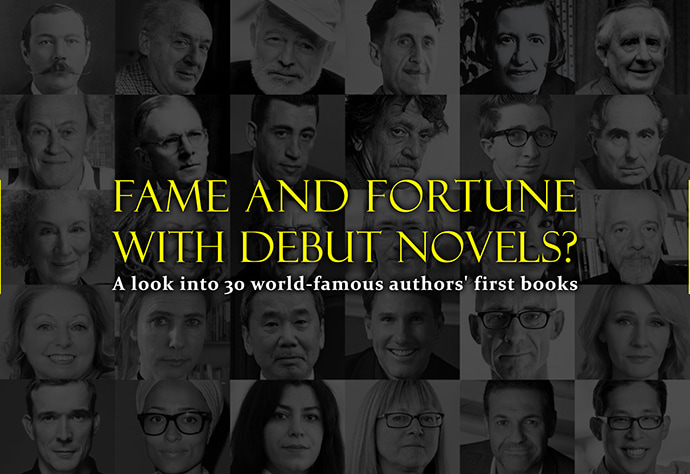
Below is a list of debut works by now world-famous authors – some of which gained their authors instant fame.
1) Sir Arthur Conan Doyle
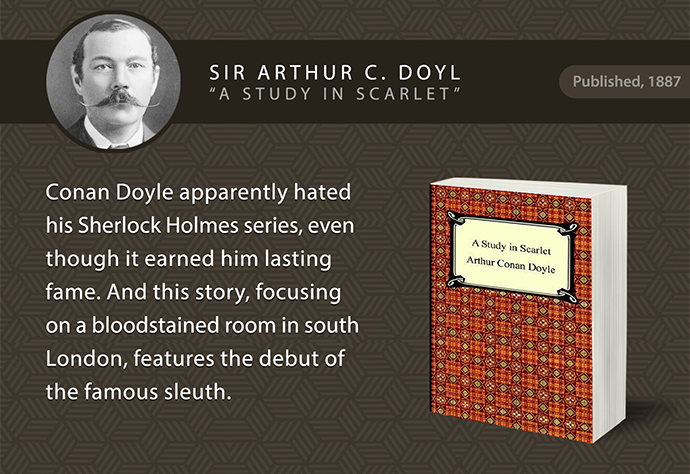
“A Study in Scarlet” (1887) – Conan Doyle apparently hated his Sherlock Holmes series, even though it earned him lasting fame. And this story, focusing on a bloodstained room in south London, features the debut of the famous sleuth.
2) Vladimir Nabokov
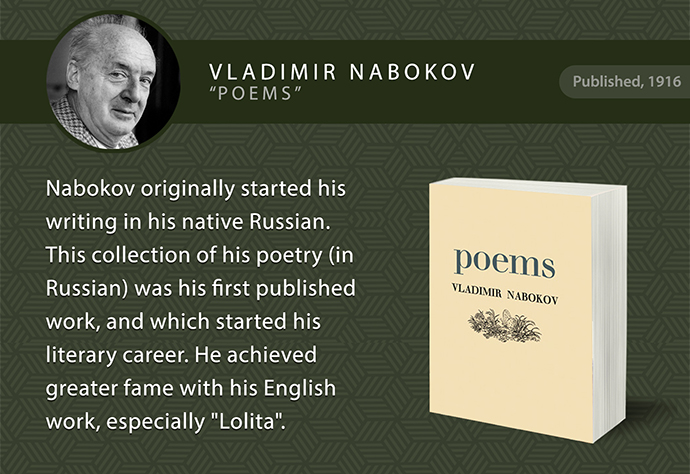
“Poems” (1916) – Nabokov originally started his writing in his native Russian. This collection of his poetry (in Russian) was his first published work, and which started his literary career. He achieved greater fame with his English work, especially “Lolita”.
3) Ernest Hemingway
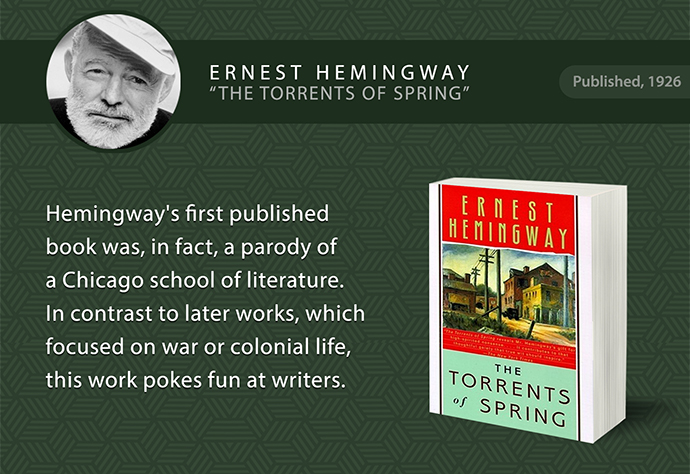
“The Torrents of Spring” (1926) – Hemingway’s first published book was, in fact, a parody of a Chicago school of literature. In contrast to later works, which focused on war or colonial life, this work pokes fun at writers.
4) George Orwell
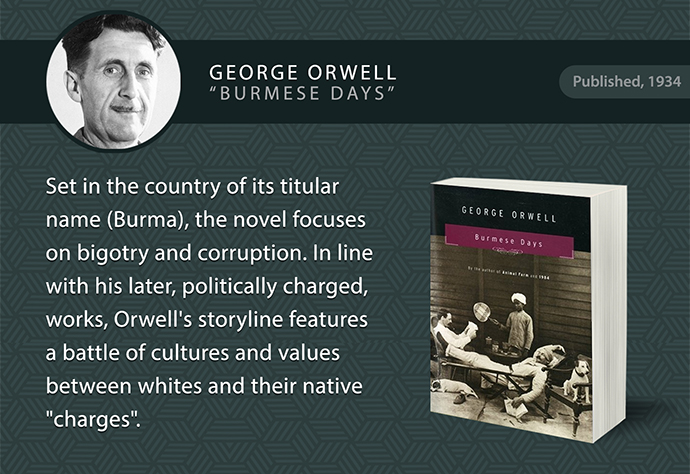
“Burmese Days” (1934) – Set in the country of its titular name (Burma), the novel focuses on bigotry and corruption. In line with his later, politically charged, works, Orwell’s story line features a battle of cultures and values between whites and their native “charges”.
5) Ayn Rand
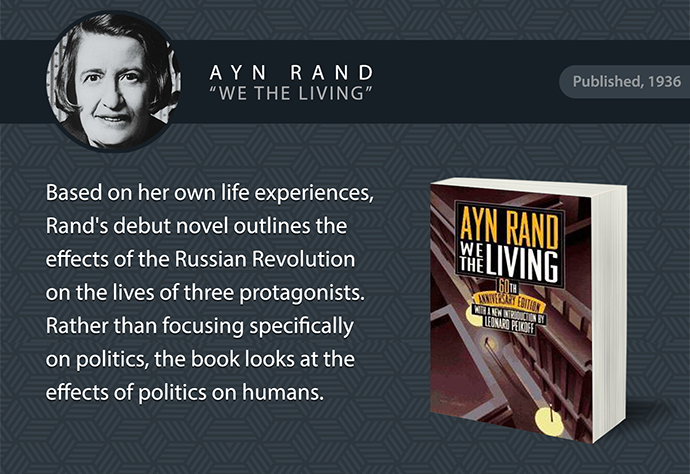
“We the Living” (1936) – Based on her own life experiences, Rand’s debut novel outlines the effects of the Russian Revolution on the lives of three protagonists. Rather than focusing specifically on politics, the book looks at the effects of politics on humans.
6) JRR Tolkien

“The Hobbit” (1937) – Although it’s now achieved fame among adult readers (and viewers of the recent films), “The Hobbit” was originally a children’s book. Building on magical realism and ancient mythology, the book takes readers on a journey through middle earth.
7) Roald Dahl
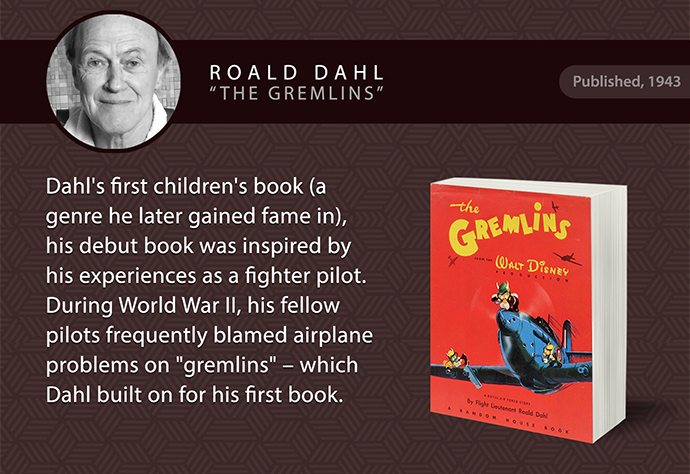
“The Gremlins” (1943) – Dahl’s first children’s book (a genre he later gained fame in), his debut book was inspired by his experiences as a fighter pilot. During World War II, his fellow pilots frequently blamed airplane problems on “gremlins” – which Dahl built on for his first book.
8) Alan Paton
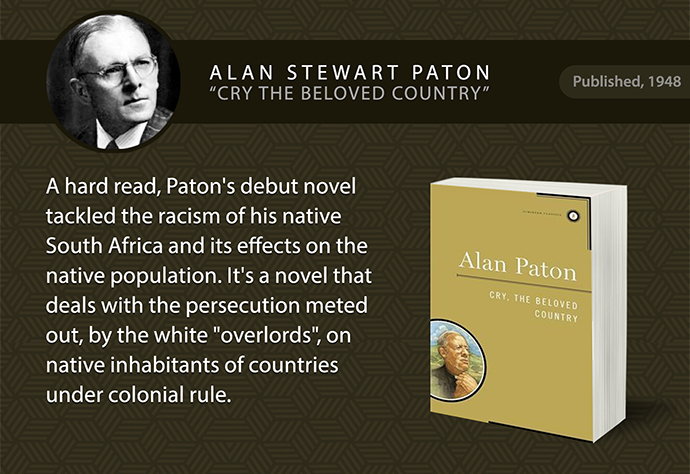
“Cry, the Beloved Country” (1948) – A hard read, Paton’s debut novel tackled the racism of his native South Africa and its effects on the native population. It’s a novel that deals with the persecution meted out, by the white “overlords”, on native inhabitants of countries under colonial rule.
9) J.D. Salinger
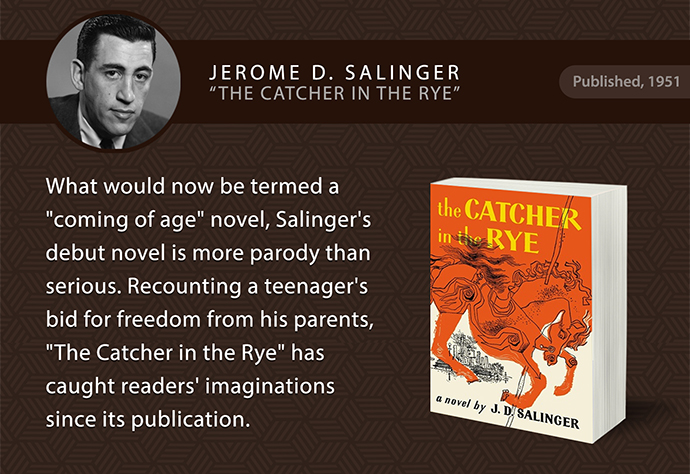
“The Catcher in the Rye” (1951) – What would now be termed a “coming of age” novel, Salinger’s debut novel is more parody than serious. Recounting a teenager’s bid for freedom from his parents, “The Catcher in the Rye” has caught readers’ imaginations since its publication.
10) Kurt Vonnegut
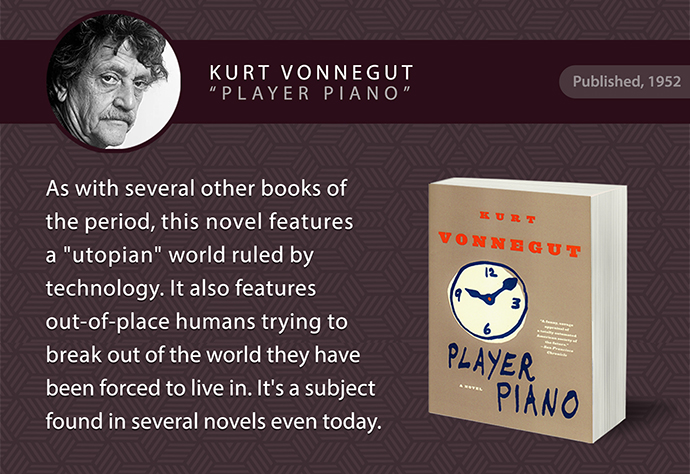
“Player Piano” (1952) – As with several other books of the period, Vonnegut’s debut novel features a “utopian” world ruled by technology. It also features out-of-place humans trying to break out of the world they have been forced to live in. It’s a subject found in several novels even today.
11) John Updike
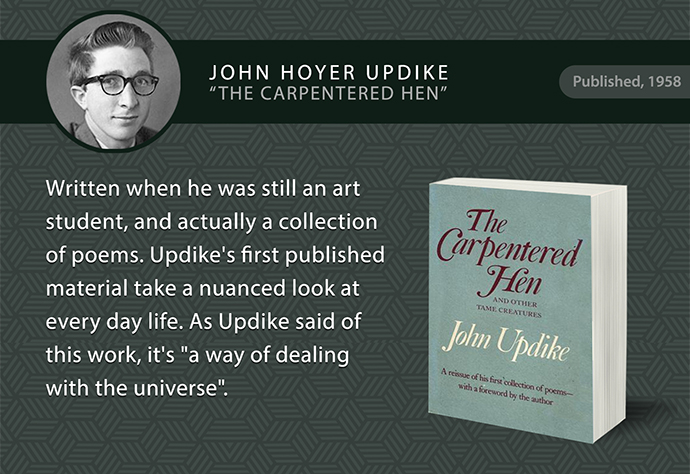
“The Carpentered Hen” (1958) – Written when he was still an art student, and actually a collection of poems. Updike’s first published material take a nuanced look at every day life. As Updike said of this work, it’s “a way of dealing with the universe”.
12) Phillip Roth
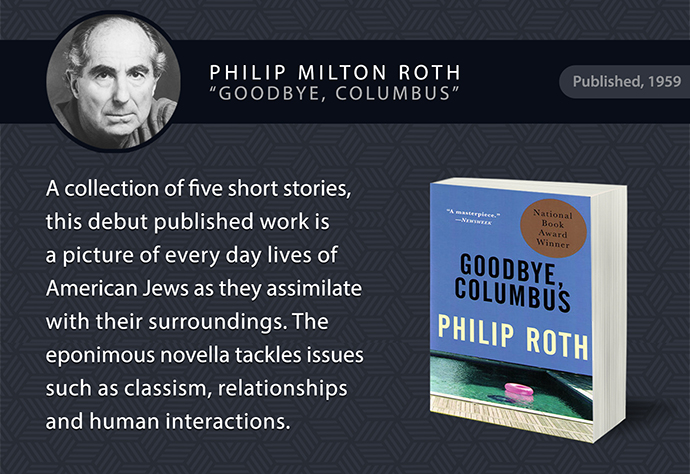
“Goodbye, Columbus” (1959) – A collection of five short stories, this debut published work is a picture of every day lives of American Jews as they assimilate with their surroundings. The eponymous novella tackles issues such as classism, relationships and human interactions.
13) Margaret Atwood
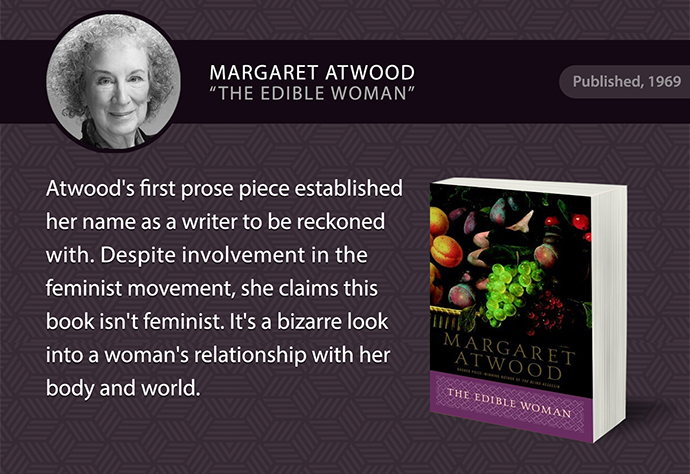
“The Edible Woman” (1969) – Atwood’s first prose piece established her name as a writer to be reckoned with. Despite involvement in the feminist movement, she claims this book isn’t feminist. It’s a bizarre look into a woman’s relationship with her body and world.
14) Toni Morrison
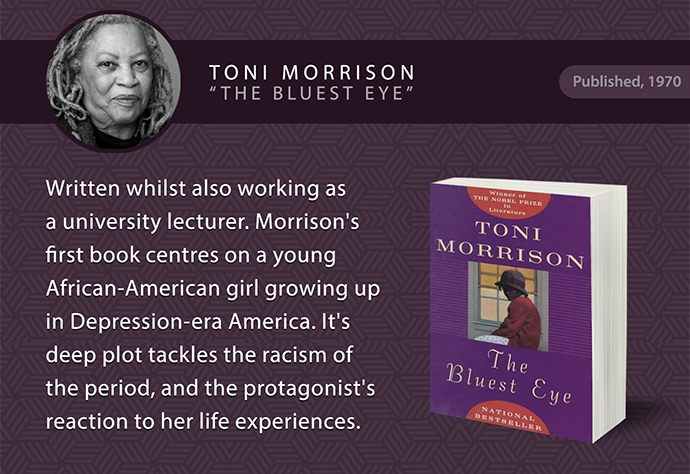
“The Bluest Eye” (1970) – Written whilst also working as a university lecturer. Morrison’s first book centres on a young African-American girl growing up in Depression-era America. It’s deep plot tackles the racism of the period, and the protagonist’s reaction to her life experiences.
15) Stephen King
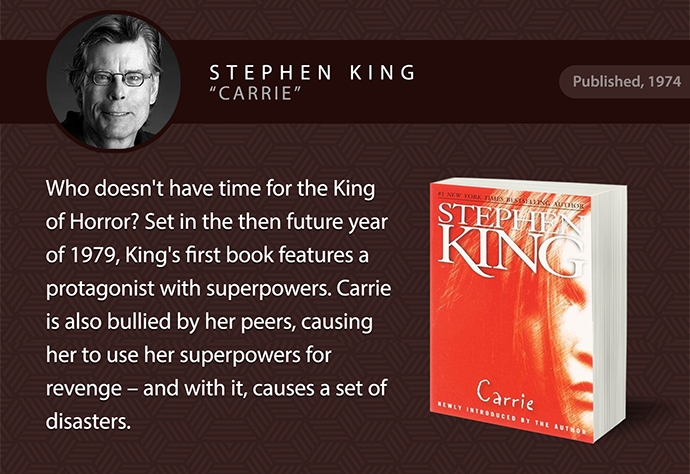
“Carrie” (1974) – Who doesn’t have time for the King of Horror? Set in the then future year of 1979, King’s first book features a protagonist with superpowers. Carrie is also bullied by her peers, causing her to use her superpowers for revenge – and with it, causes a set of disasters.
16) Ian McEwan
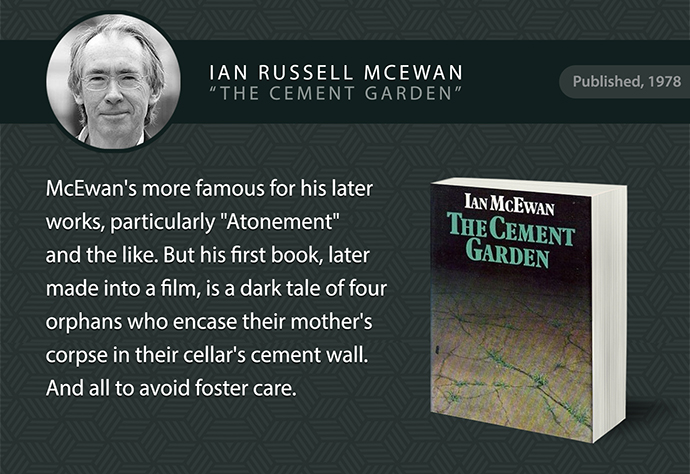
“The Cement Garden” (1978) – McEwan’s more famous for his later works, particularly “Atonement” and the like. But his first book, later made into a film, is a dark tale of four orphans who encase their mother’s corpse in their cellar’s cement wall. And all to avoid foster care.
17) Isabel Allende
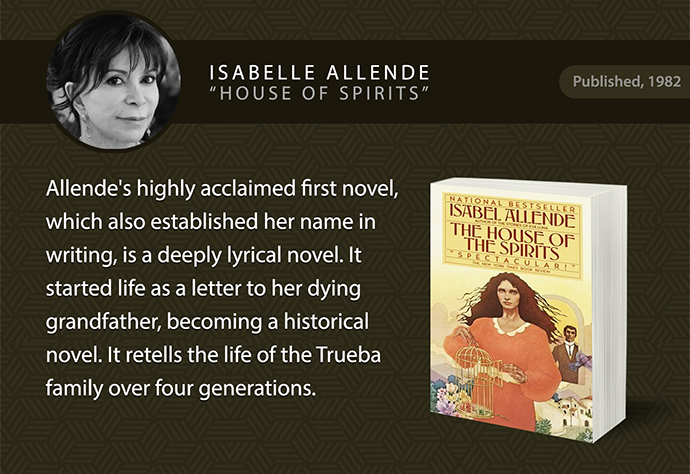
“House of Spirits” (1982) – Allende’s highly acclaimed first novel, which also established her name in writing, is a deeply lyrical novel. It started life as a letter to her dying grandfather, becoming a historical novel. It retells the life of the Trueba family over four generations.
18) Paulo Coelho
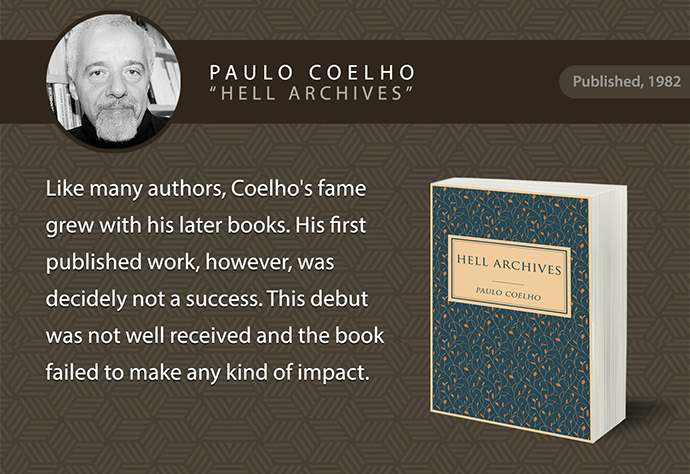
“Hell Archives” (1982) – Like many authors, Coelho’s fame grew with his later books. His first published work, however, was decidely not a success. The debut was not well received and the book failed to make any kind of impact.
19) Hilary Mantel
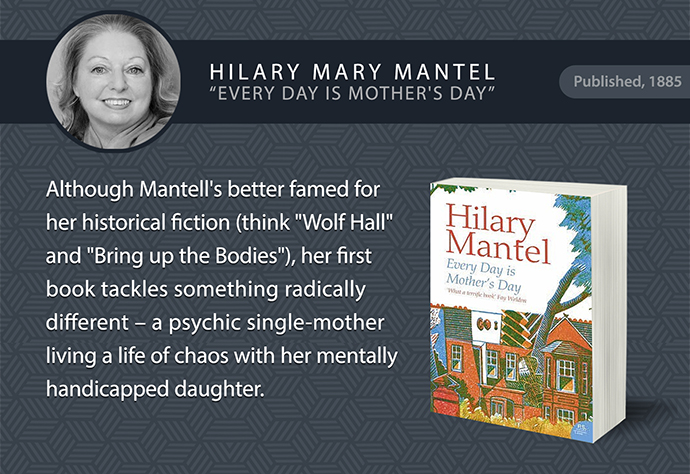
“Every Day is Mother’s Day” (1985) – Although Mantell’s better famed for her historical fiction (think “Wolf Hall” and “Bring up the Bodies”), her first book tackles something radically different – a psychic single-mother living a life of chaos with her mentally handicapped daughter.
20) Lionel Shriver
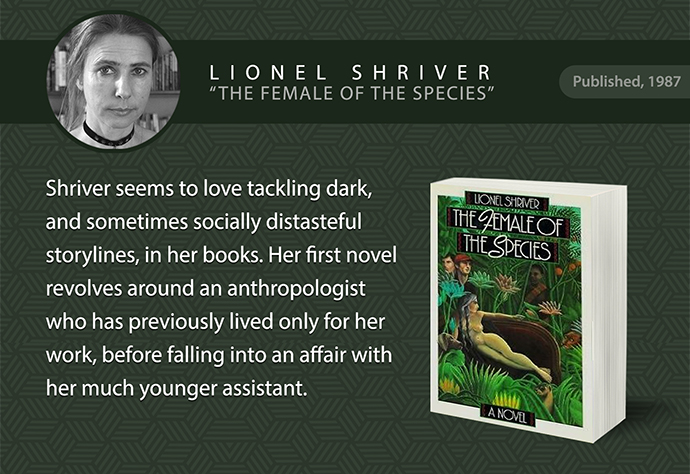
“The Female of the Species” (1987) – Shriver seems to love tackling dark, and sometimes socially distasteful storylines, in her books. Her first novel revolves around an anthropologist who has previously lived only for her work, before falling into an affair with her much younger assistant.
21) Haruki Murakami
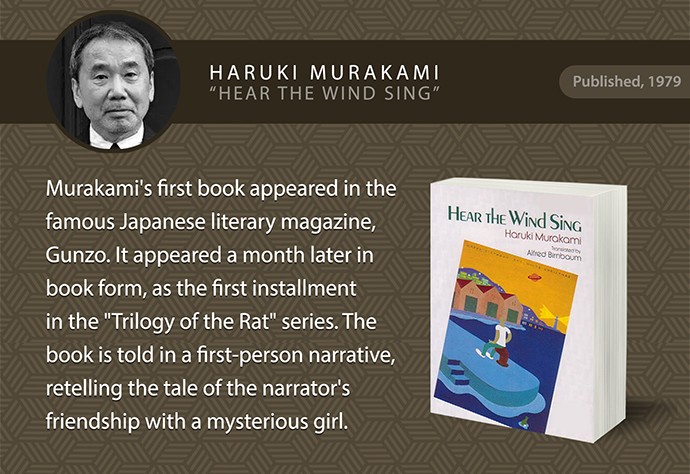
“Hear the Wind Sing” (1979 – Released in English in 1987) – Murakami’s first book appeared in the famous Japanese literary magazine, Gunzo. It appeared a month later in book form, as the first installment in the “Trilogy of the Rat” series. The book is told in a first-person narrative, retelling the tale of the narrator’s friendship with a mysterious girl.
22) Nicholas Sparks
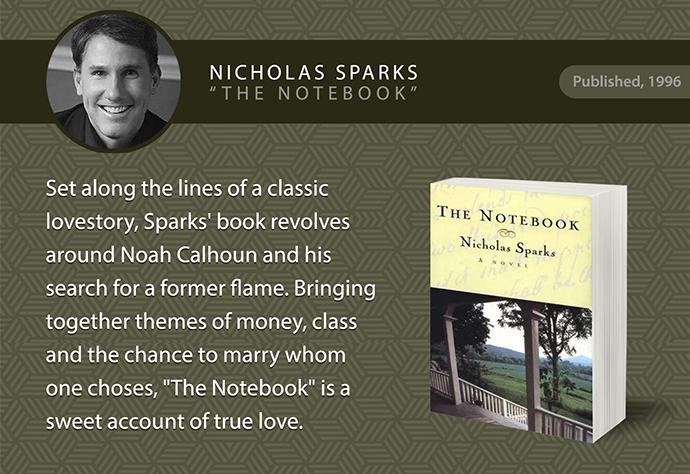
“The Notebook” (1996) – Set along the lines of a classic love-story, Sparks’ book revolves around Noah Calhoun and his search for a former flame. Bringing together themes of money, class and the chance to marry whom one chooses, “The Notebook” is a sweet account of true love.
23) Chuck Palahniuk

“Fight Club” (1996) – Palahniuk’s debut has become a cult classic, yet is probably more famous in its film version. Tackling the human beast’s grosser side and need for masculine superiority, this novel is all about bare-knuckle fighting. It isn’t a read for the faint-hearted.
24) JK Rowling
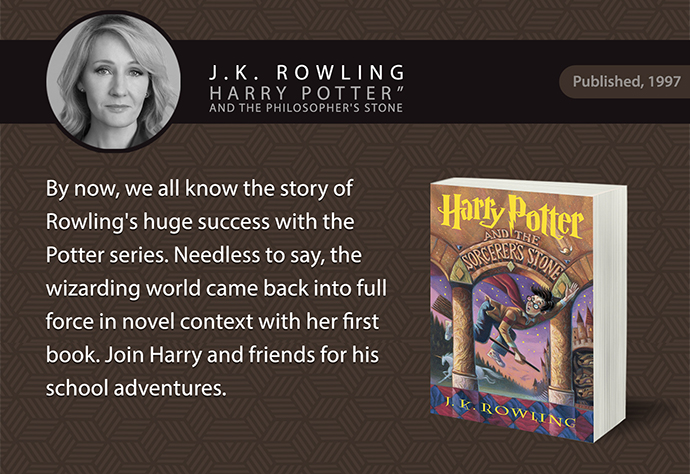
“Harry Potter and the Philosopher’s Stone” (1997) – By now, we all know the story of Rowling’s huge success with the Potter series. Needless to say, the wizarding world came back into full force in novel context with her first book. Join Harry and friends for his school adventures.
25) David Mitchell
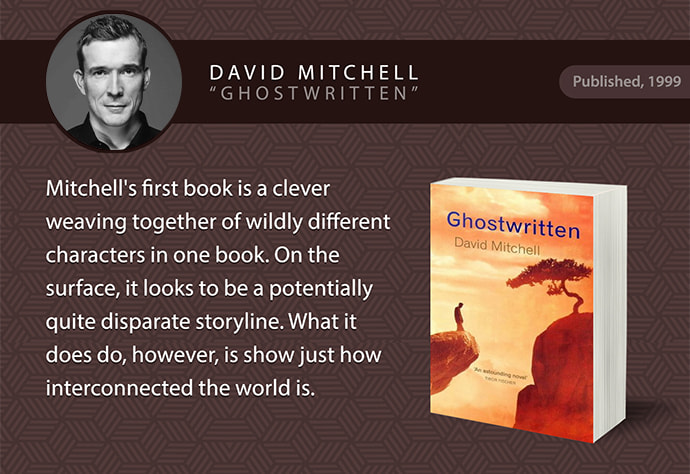
“Ghostwritten” (1999) – Mitchell’s first book is a clever weaving together of wildly different characters in one book. On the surface, it looks to be a potentially quite disparate storyline. What it does do, however, is show just how interconnected the world is.
26) Zadie Smith
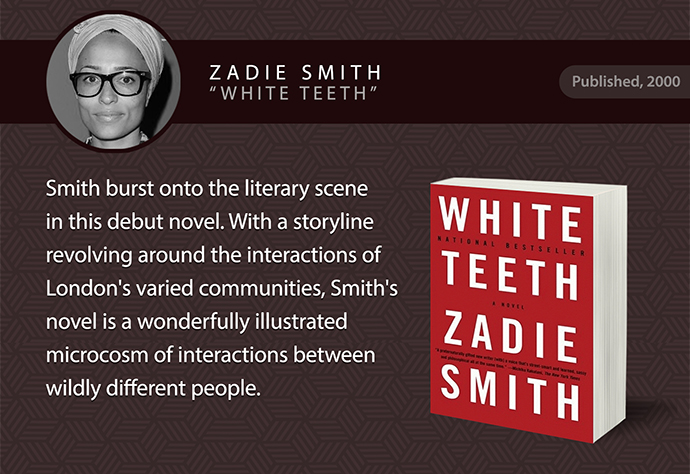
“White Teeth” (2000) – Smith burst onto the literary scene in this debut novel. With a storyline revolving around the interactions of London’s varied communities, Smith’s novel is a wonderfully illustrated microcosm of interactions between wildly different people.
27) Marjane Satrapi
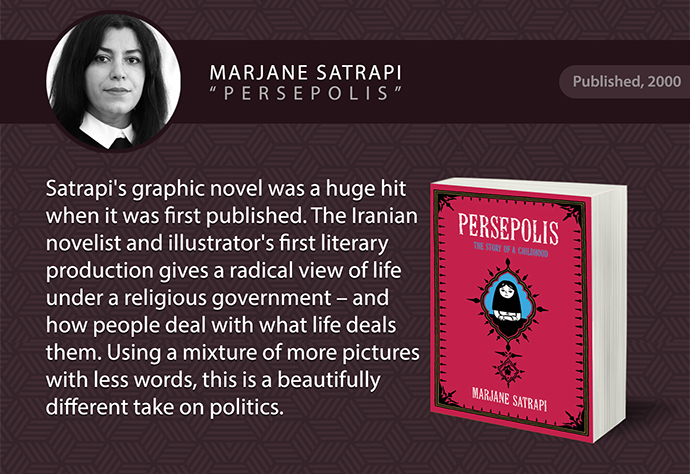
“Persepolis” (2000) – Satrapi’s graphic novel was a huge hit when it was first published. The Iranian novelist and illustrator’s first literary production gives a radical view of life under a religious government – and how people deal with what life deals them. Using a mixture of more pictures with less words, this is a beautifully different take on politics.
28) Helen DeWitt
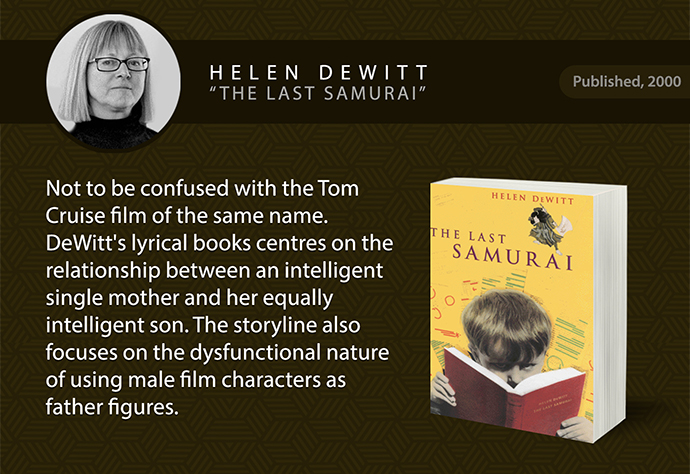
“The Last Samurai” (2000) – Not to be confused with the Tom Cruise film of the same name. DeWitt’s lyrical books centres on the relationship between an intelligent single mother and her equally intelligent son. The storyline also focuses on the dysfunctional nature of using male film characters as father figures.
29) Khaled Hosseini
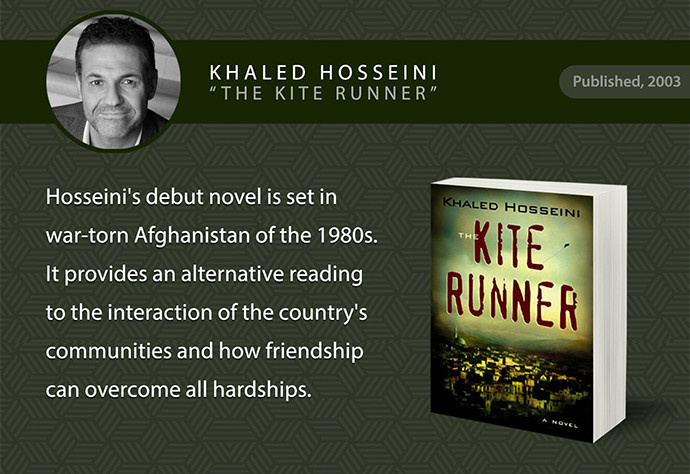
“The Kite Runner” (2003) – Hosseini’s debut novel is set in war-torn Afghanistan of the 1980s. It provides an alternative reading to the interaction of the country’s communities and how friendship can overcome all hardships.
30) Gene Luen Yang

“American Born Chinese” (2006) – Yang’s first literary offering, a graphic novel, deals with racism in North America head on through three short tales. It brings together traditional stories and immigrants finding a bond between their home cultures and newly adopted countries.
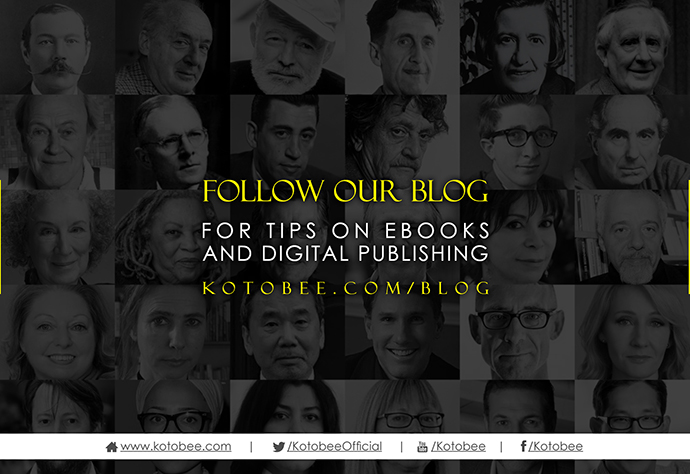
Did you enjoy the list? Did we miss any? Let us know down below!
.
Read more
Writing Process Explained for Non-Writers
















Kevon Brown
July 8, 2019Amazing! Thanks for sharing such type of amazing article. Keep sharing!
Kotobee
July 8, 2019Hello Kevon,
We’re glad you liked the article.
Happy reading!
Ron Manley
March 9, 2024A couple of novels not on your list.
– Lucky Jim by Kingsley Amis.
– Under the Net by Iris Murdoch.